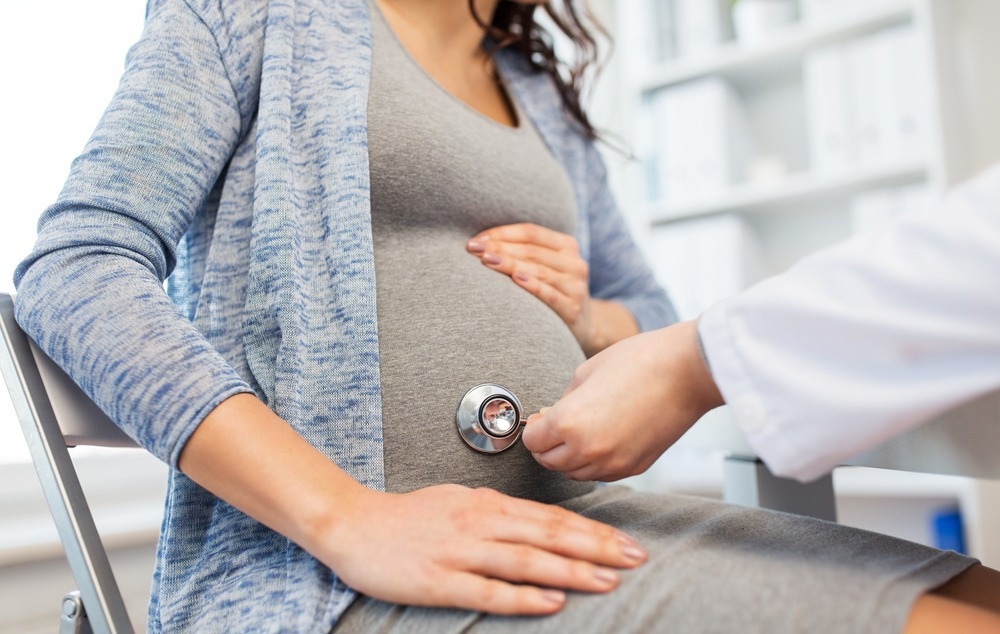Clinical trials in pregnant women are uncommon, and as a result, any available medications these individuals could tke are prescribed off-label for them or not at all. To address this, researchers have developed a proof of concept for the key characteristics required to generate pregnancy-safe gene treatments.

Image Credit: Ground Picture/Shutterstock.com
The effectiveness of lipid nanoparticles (LNPs) has grown since COVID-19 mRNA vaccines were administered to hundreds of millions of individuals, including pregnant women. Researchers at Carnegie Mellon University are attempting to unlock a wide range of new drugs by addressing disease at the gene level.
In thinking about the future of genetic medicine, we would like to understand what could be good for pregnant people as well.
Kathryn Whitehead, Professor, Carnegie Mellon University
Whitehead, a professor of chemical and biomedical engineering, was among the first to investigate mRNA delivery during pregnancy.
Whitehead offers structural recommendations for the creation of lipid nanoparticles that are safe to use during pregnancy in a study that was published in PNAS. The transporters of mRNA into cells are lipid nanoparticles.
The delivery vehicle is at the center of a variety of concerns with gene treatments in pregnant vs non-pregnant individuals. It is unclear if all deliveries can be made in the same vehicle or if a particular model has to be made to be used safely throughout pregnancy.
Whitehead’s study sheds light on how pregnancy-related changes affect the behavior of nanoparticles in comparison with non-pregnant individuals.
Pregnancy alters the immune system’s typical reaction to anything foreign. Since lipid nanoparticles could be toxic and create other problems, it is critical to comprehend how the immune system reacts to them.
According to Whitehead’s study, the effects of lipid nanoparticles during pregnancy depend on the chemistry involved. The nanoparticle’s chemistry is altered by the addition of various lipids, and this modifies the immune system’s reaction.
Researchers examined 260 distinct lipids in the study. They included substances that are known to function well while inducing little or no immune response, materials that are known to function well while inducing an immune response, and materials that are known to function badly.
According to the study, the lipid nanoparticles utilized at the Whitehead lab do not cross into the fetus. The body has distinct drug delivery hurdles during pregnancy. The placenta is one of the most noticeable. It is essential for giving the fetus nutrition while preventing the transfer of any harmful substances.
The majority of therapies a mother might require should not be given to the fetus. According to Whitehead’s study, mRNA can be sent to the placenta without building up inside the fetus.
There are multiple diseases in which the placenta is dysfunctional. The most prevalent is preeclampsia.
Whitehead added, “If we can deliver mRNA to the placenta, then it opens up opportunities for therapy and also to explore why these diseases are happening.”
Additionally, scientists observed that lipid nanoparticles, which had been implicated in inflammation in earlier studies, impeded embryonic growth. This demonstrates the detrimental effects of administering an inflammatory lipid nanoparticle during pregnancy in a manner that is both quantitative and structurally dependent.
Certain chemistries allow researchers to anticipate that any material possessing that specific structural group will be problematic. Researchers are able to accurately predict which lipids to utilize in the future by improving their grasp of structure-function.
Early on in the studies, collaborators from the Magee-Womens Research Institute played a crucial role. Whitehead is reaching out to additional collaborators there as the research develops.
According to Whitehead, the study on mRNA delivery during pregnancy will advance the development of novel, pregnancy-safe therapies. Within the next ten years, the results could result in improved treatments for maternal diseases like premature birth or preeclampsia.
Journal Reference:
Chaudhary, N., et. al. (2024) Lipid nanoparticle structure and delivery route during pregnancy dictate mRNA potency, immunogenicity, and maternal and fetal outcomes PNAS. doi:10.1073/pnas.2307810121.